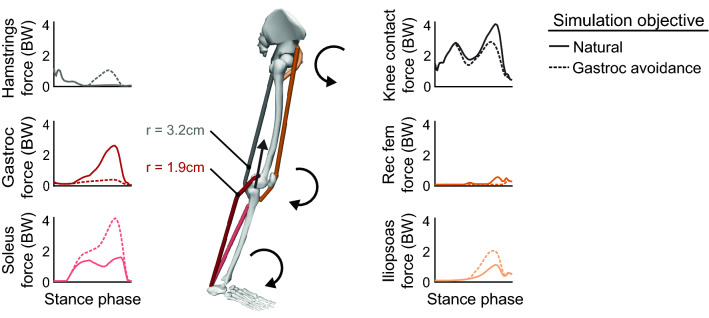Figure 3.
Simulation of a gastrocnemius avoidance coordination pattern. Identical joint kinetics were simulated (n = 1) with a natural (Eq. 1) and a gastrocnemius (gastroc) avoidance (Eq. 2) static optimization objective function. During late stance, the muscles generate ankle plantarflexion, knee flexion, and hip flexion moments. The gastrocnemius avoidance coordination pattern requires increased soleus and hamstrings force to compensate for the ankle and knee moments normally generated by the gastrocnemius. The larger knee flexion moment arm (r) of the hamstrings compared to the gastrocnemius allows the hamstrings to generate the same moment with less force than the gastrocnemius, reducing knee contact force. A weighted average of the moment arms (hamstrings: biceps femoris long head and short head, semitendinosus, semimembranosus; gastrocnemius: medial and lateral heads) was computed at 75% of the stance phase, weighted by each muscle’s optimal force in the musculoskeletal model36.

